Garden gerberas: planting and care
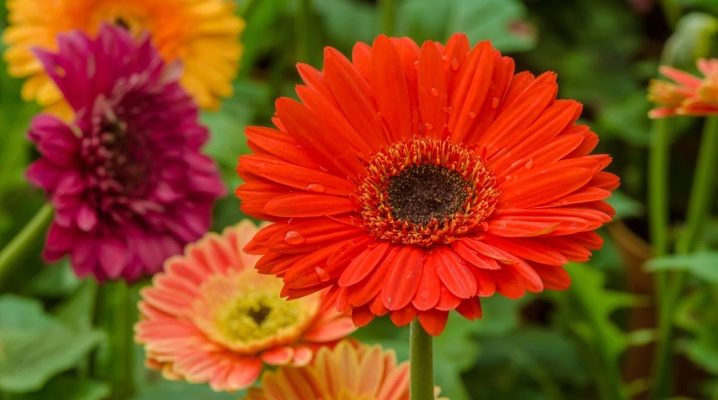
Incredible, bright, expressive, chamomile-shaped, gerberas are loved by flower growers. The variety of colors always attracts garden owners. However, until recently, gerberas were grown at home, as planting in the open air caused difficulties. However, if you study the whims and conditions of caring for a capricious flower, then the summer cottage may well be decorated with luxurious elegant islets of gerberas.
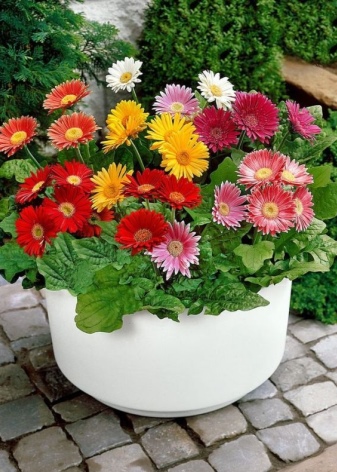

Description
This elegant flower comes from Africa. The uniqueness of the plant lies in the combination of a modest shape, reminiscent of a chamomile, with bright, rich, very diverse petal colors. Gerbera is a herbaceous plant that belongs to the type of perennials. The beauty of the flower makes it irreplaceable both in the creation of floristic and landscape compositions.
Distinctive features:
foliage is porous with cuts, elongated, shaped into a rosette at the roots, rich green color;
strong rhizomes;
petioles, stems, beginning of a leaf;
aster-type flowering, basket-shaped, high stems;
the size of the flowers is different, the maximum diameter is 15 cm;
after the withering of the flower, a seed fruit is formed;
the color range is extremely diverse: white, orange, purple, yellow, red, cream, pink.
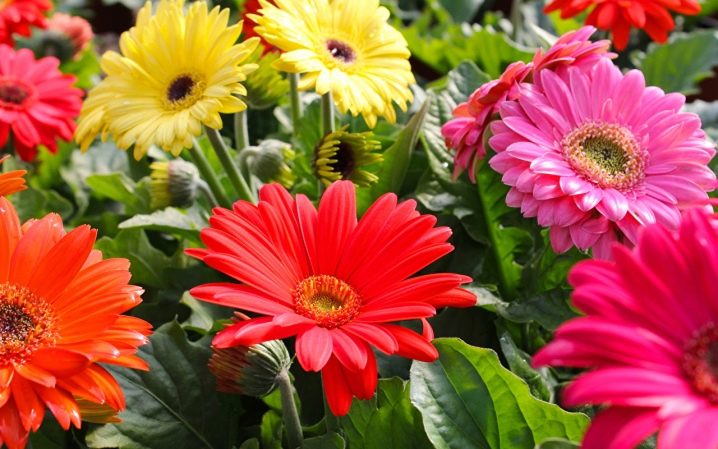
Types and varieties
There are a huge number of hybrids, gerbera varieties, growers use the classification by external description:
semi-double;
terry;
with small flowers;
with large flowers and wide foliage;
with large flowers and narrow foliage.
All these varieties are descended from two main - green-leaved gerbera and "Jamson". Garden gerberas are very popular, the Jamson gerbera belongs to the street type, it is defined as one of the most suitable plants for outdoor use. This perennial bush-shaped gerbera is characterized by a long flowering period, expressive inflorescences of a bright shade.

Other popular types of street gerbera:
Garvinea sweet dreams - a tall bush with abundant flowering and various shades;
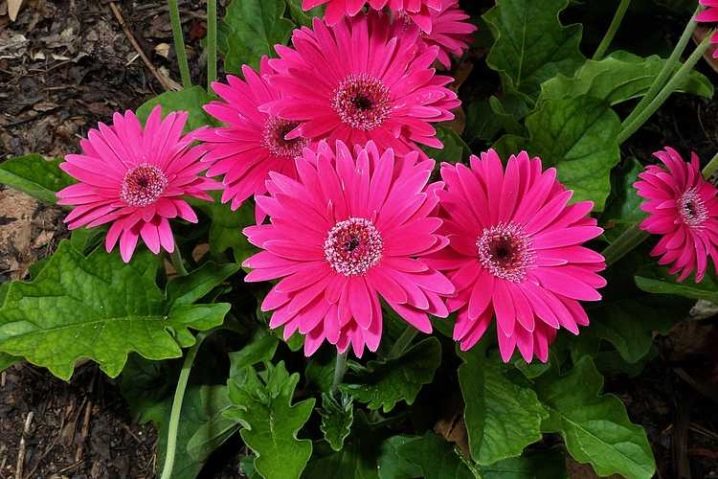
"Klondike" - semi-double appearance, blooms for about 3 months, the color is varied, the flowers are large, the width and height of the bush is about 50 cm;
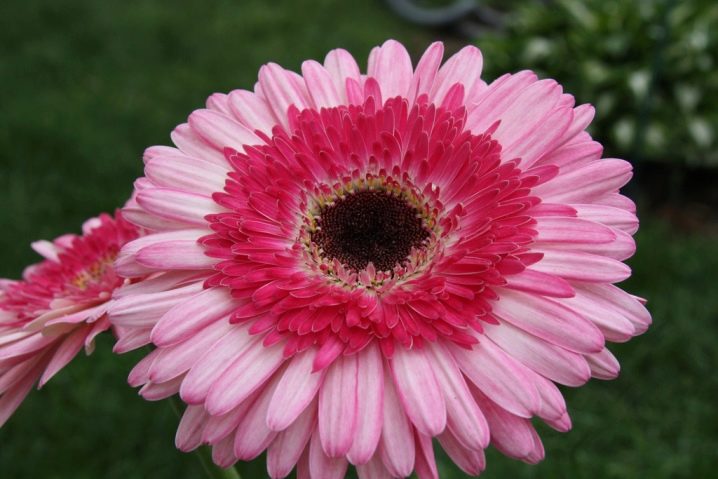
"Abyssinian" - are distinguished by leaves in the shape of an ellipse, with a wavy edging with a fluff, flowers are formed at the top of the bush, snow-white or red;

Auranticka - rosette foliage in the shape of an ellipse, the bush is low, the inflorescences-baskets are yellow, scarlet, pink, orange, rarely purple and even black;
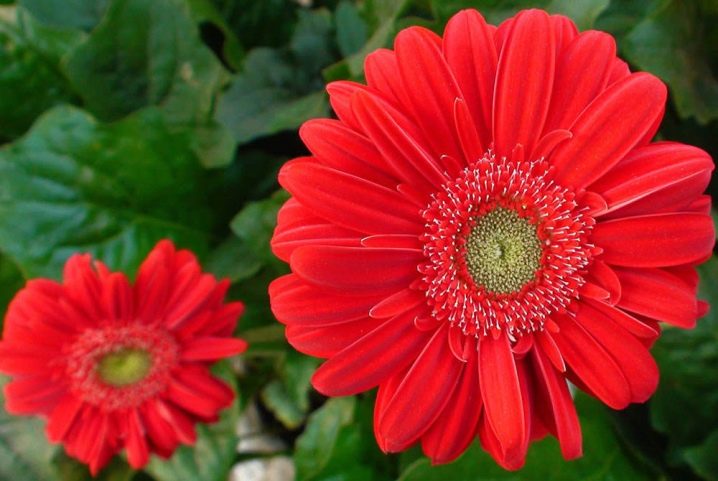
"Wright" - resembles a large chamomile in appearance, the color range varies from reds, purples and oranges to pinks and yellows;
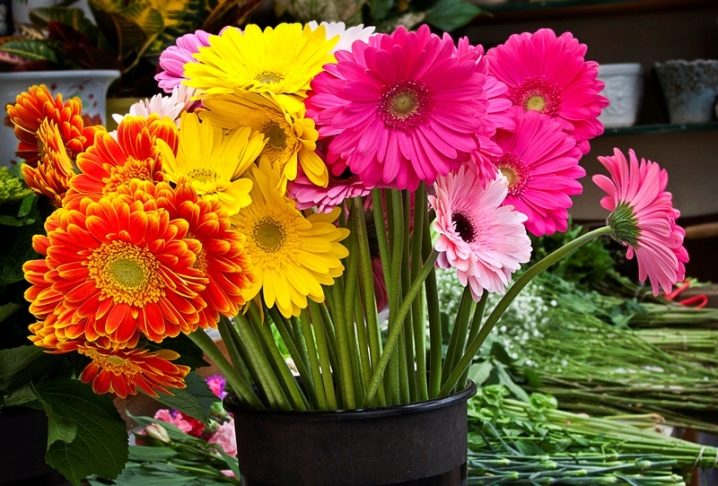
"Vega" - large-flowered plant with narrow foliage, bush up to 70 cm, bright orange color with yellow tint.
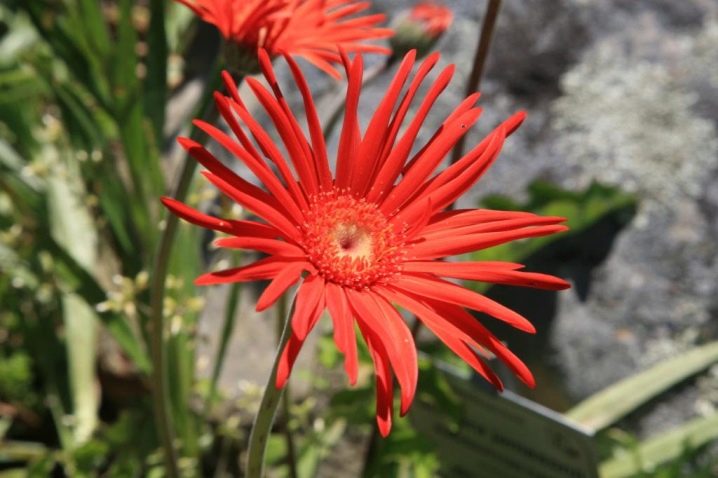
Planting and leaving
Almost every gardener wants to grow a gerbera in the open ground in the country, since luxurious flowering is an absolute decoration of the landscape. Growing a flower is fraught with difficulties due to the fact that the natural habitat is hot Africa. But in the summer, the gerbera quite tolerably tolerates the Russian climate of the middle zone, in the fall the plant must be dug up. Thus, a perennial plant becomes an annual plant.
Year-round cultivation of the plant is possible in a greenhouse and portable pots.
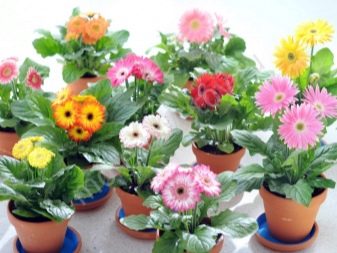
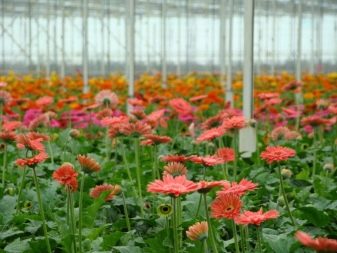
In the southern regions with a milder climate, it is quite possible to grow a gerbera without even digging, closing the roots for the period of cold weather. In the southern regions, gerberas are usually very large, well-developed, and bloom profusely all summer. The best place for landing is with the possibility of shading during the hours of the sun, in order to avoid drooping foliage. Placing seeds in soil is a rather ineffective breeding method. Therefore, you first need to plant seeds for seedlings. First of all, you need to buy seed material or collect it, the process of planting seedlings can begin in January. The landing algorithm is as follows:
one part of humus is mixed with a part of leafy ground and two parts of sod, sand is added;
a low, elongated pot with holes in the bottom is prepared, in it the soil is treated with a hot manganese solution;
after cooling, you can sow not very deeply or spread it on top and cover with a dry substrate;
place the seeds close, no more than 5 mm from each other;
then the containers are closed with polyethylene or glass;
regularly moisten, spraying the soil, watch the temperature, which should not be lower than +18 degrees;
after a week sprouts will appear, after two leaves will be tied;
after the formation of four leaves, pick the plants and plant them in pots.
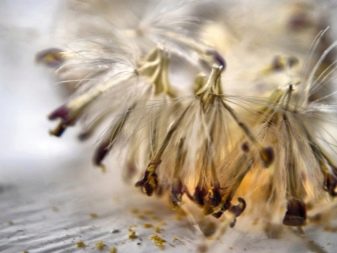
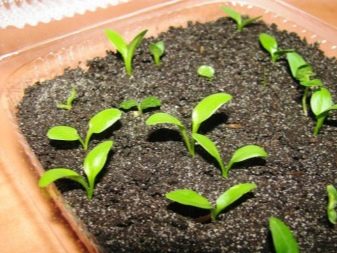
Optimal planting conditions:
temperature range from +18 to +20 degrees;
a place with enough light, but not in the sun;
elimination of drafts;
moistening with water at room temperature only after the top of the soil has dried;
mineral feeding is carried out approximately 30 days after the dive;
if there is not enough natural light, use additional lighting.
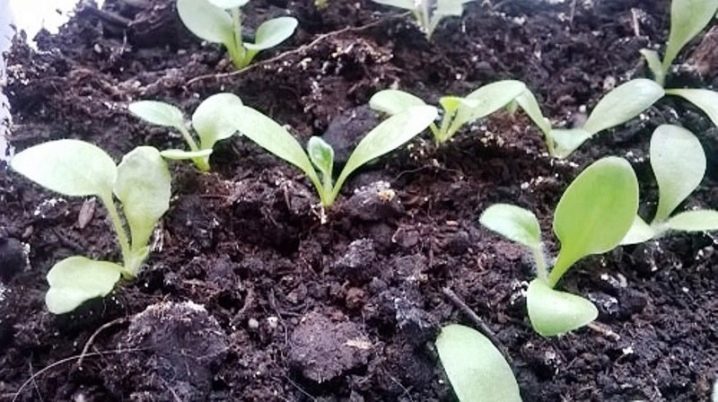
What mistakes do flower growers encounter most often when planting gerberas:
cold water for humidification;
high humidity in the room;
little light;
violation of the roots in the process of picking.
Landing under the open sky is carried out when the air temperature is stable, there are no frosts, most often at the end of May. When choosing a place in the garden, give preference to a well-lit area. In the south, however, it is necessary to take into account too hot sunshine and consider the possibility of blackout.
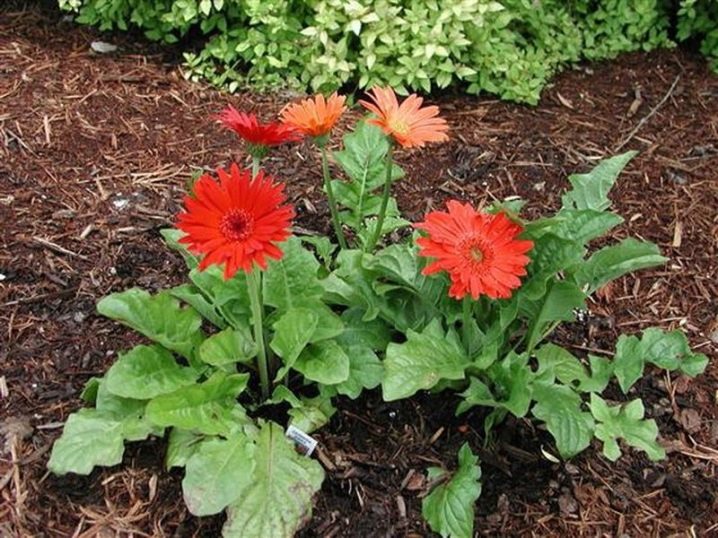
Open ground landing rules:
use only healthy seedlings;
harden the plant before the procedure, periodically taking them out into the open air and gradually increasing the residence time;
prepare a device that can cover the flower in the event of a sudden cold snap;
prepare the soil in advance, rid it of plants, dig in, introduce peat and sand;
form a hole, place a drainage layer at the bottom, sprinkle with nutritious soil;
place the plant in the center, sprinkle with soil, strengthen;
moisturize under the root.
Caring for a gerbera in the garden is not too difficult, but requires regularity and knowledge of the nuances of the healthy development of the plant.
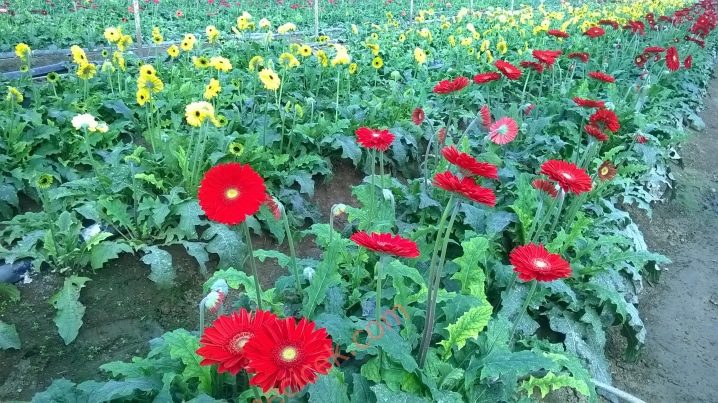
Moisturizing:
the flower does not need to be sprayed;
watering is moderate, the soil should not be waterlogged and allowed to dry;
on average, water the plant at the root twice a week in the morning, provided that there is no rain;
during the ripening period of flowers, it is necessary to increase the frequency of watering;
after moistening the soil, it needs to be loosened;
use water that has been heated by the sun during the day.
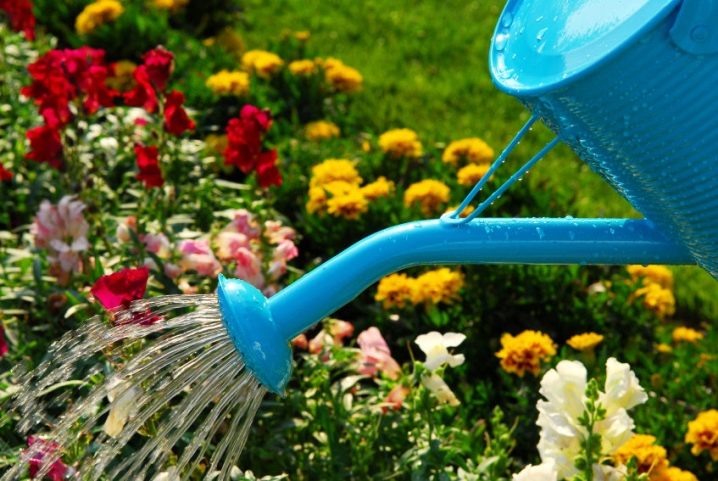
Top dressing:
mineral-type products are optimal for flowering plants;
do not use manure, humus - the plant can get sick with a fungus;
in the spring, it is better to use formulations with nitrogen, after the beginning of flowering, switch to formulations that contain calcium, potassium;
the composition is diluted according to the instructions, but a little less concentrated, the administration schedule is twice a month.
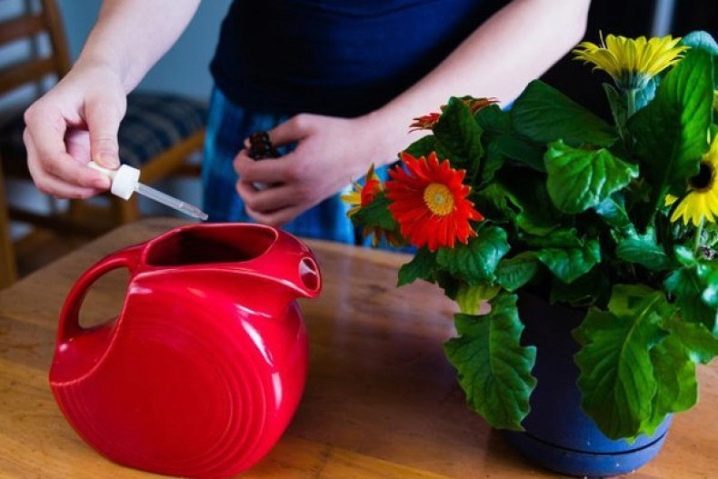
Weeding and pruning:
wilted inflorescences are regularly removed, this allows you to extend the flowering period;
they cannot be cut off, only unscrewed, broken off;
weed the plant as needed, otherwise the weeds will take away its vitality, in addition, harmful insects start up in the thick of the grass;
If you live in a region with a mild climate, you do not need to dig up the gerbera after flowering.
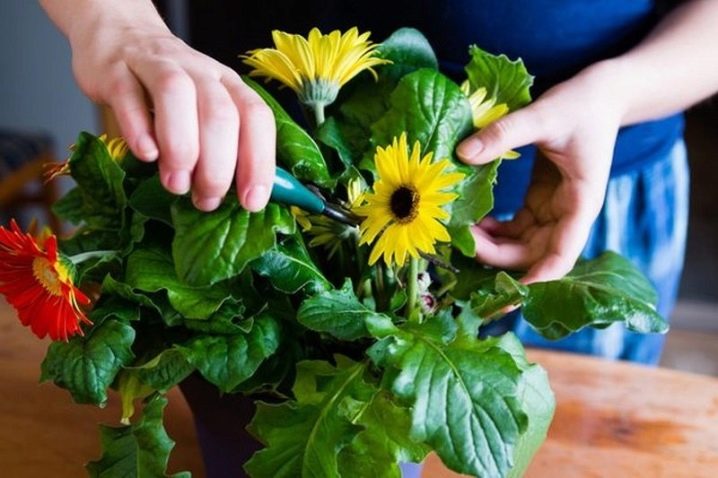
How to prepare a plant for wintering:
rid him of the peduncles;
gradually reduce hydration and do not feed;
in autumn, the root part is covered with straw or leaves;
make a plywood box, cover the plant with it;
with the appearance of sunny warm days, periodically raise the shelter to adapt the flower;
after the temperature stops dropping below +10, you can completely rid him of the shelter.
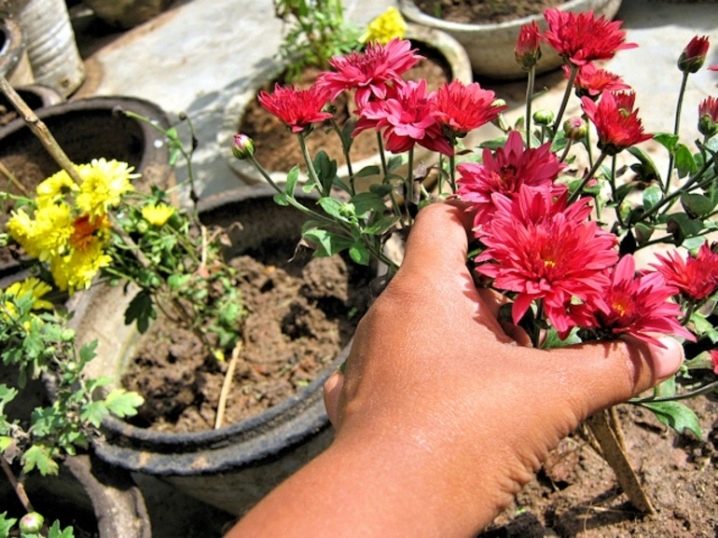
If the climate in your area is more severe, but you do not want to sow gerbera as an annual, you can arrange to transfer it to the winter. This is done as follows:
the plant must be dug up and transplanted into a container together with the soil on the roots;
it should be placed in basements, where the temperature does not fall below +10, but does not rise above +15, the humidity is preferably low;
you do not need to feed the gerbera, you just need to water it occasionally.
In the case when the basement is not equipped and there is no greenhouse, you can place a container with a gerbera in a cool, darkened place in the apartment.
Diseases and pests
Open ground makes the plant more vulnerable and susceptible to insect attacks and diseases. Most often, flower growers are faced with rot.
Root rot provokes rotting of the leaf rosette and root system. The foliage withers, the plant dies. Most often this happens due to too abundant moisture, cooling and watering not at the root. If you cannot cope with the disease, you need to dig up the plant. Treatment is carried out with drugs "Maxim", "Fundazol".
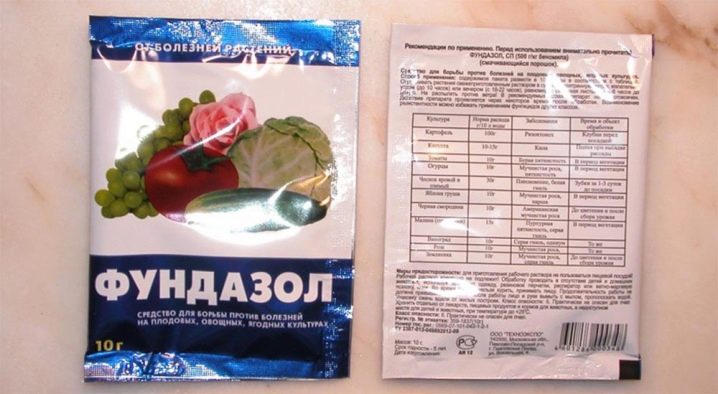
Gray rot affects the inflorescences and base of the leaf with a fungus, a pubescent plaque of a gray shade appears. For treatment, you can use "Fundazol", "Rovral".
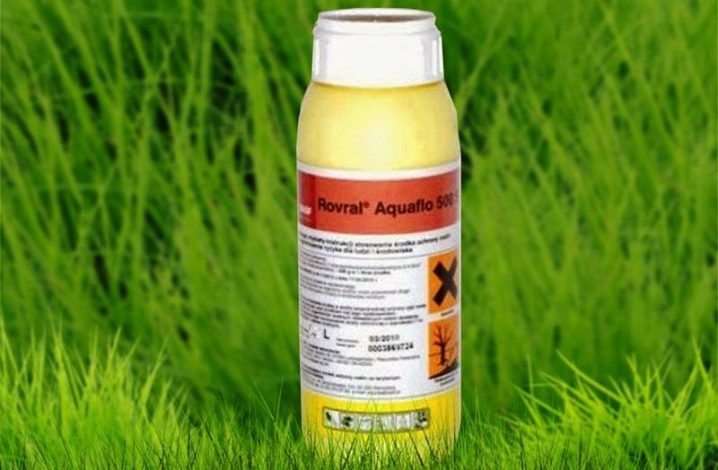
Powdery mildew. It is characterized by the formation of a powdery snow-white bloom on the petioles. To prevent the development of the disease and the death of the flower, it is treated with "Topaz", "Fundazol". The reasons are mineral oversaturation, excess or lack of light, high humidity, lack of natural ventilation.
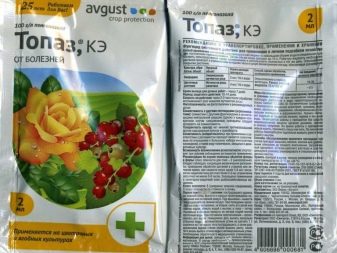
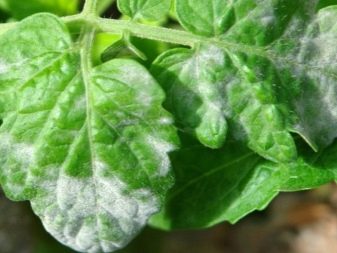
- Mosaic. This disease is of a viral nature, it infects insects, however, the virus can begin in the spring in conditions of high humidity and low temperatures. The disease is expressed in a yellowish spotting of foliage and its deformation.
There is no cure for this virus. To prevent its occurrence, it is necessary to treat the garden from pests, to avoid planting in areas where pumpkin plants grew.
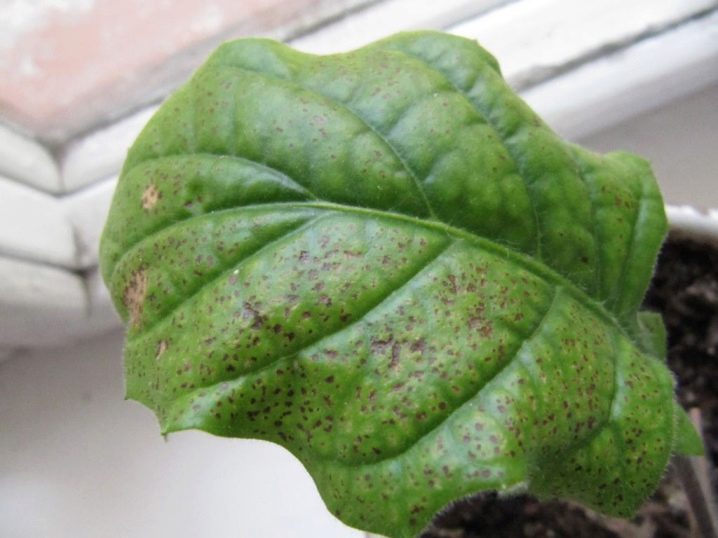
Among pests, aphids and whiteflies are the most dangerous. In the fight against them, the following drugs will help: Fitoverm, Aktellik, Karate, Inta-Virom, Aktara, Iskra, Confidor, Akarin. Be sure to read the instructions for use for each product before using it.
Reproduction
In addition to seed planting, gerbera is propagated by dividing the bush. The advantages of this method:
many plants are obtained;
flowers are resistant to disease;
fast development.

There is also a drawback, it is rare when a gerbera, propagated in this way, retains its belonging to the variety.
Division Algorithm:
divide mature bushes that have reached three years;
first you need to dig them out;
rhizomes are made shorter so that the length is no more than 15 cm;
divided into parts, so that each of them contains rhizomes and shoots;
the sections are processed with activated carbon;
planted in shady areas at the very beginning of summer.
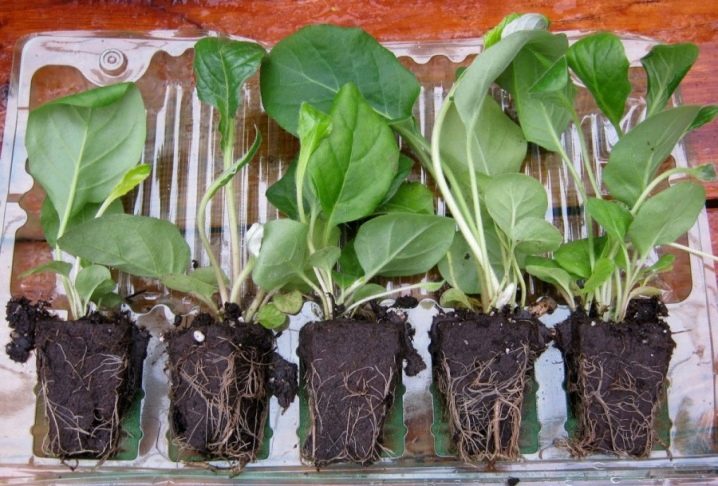
Examples in landscape design
A spectacular sight - a row of gerberas planted along the fence.
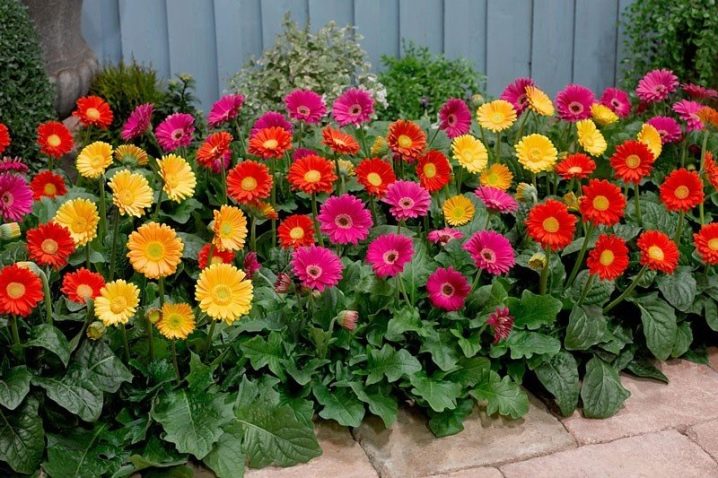
Garden tanks are a great place to plant a luxurious bush.
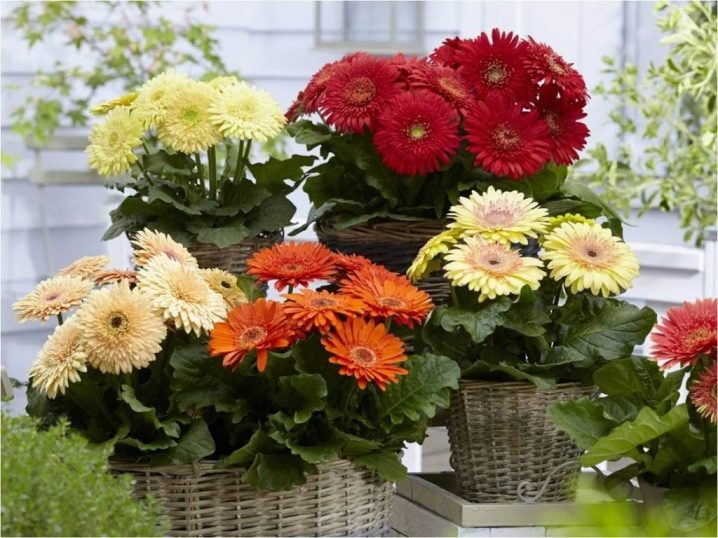
A bright bush among the lush greenery of the lawn and bushes is a very beautiful design solution.
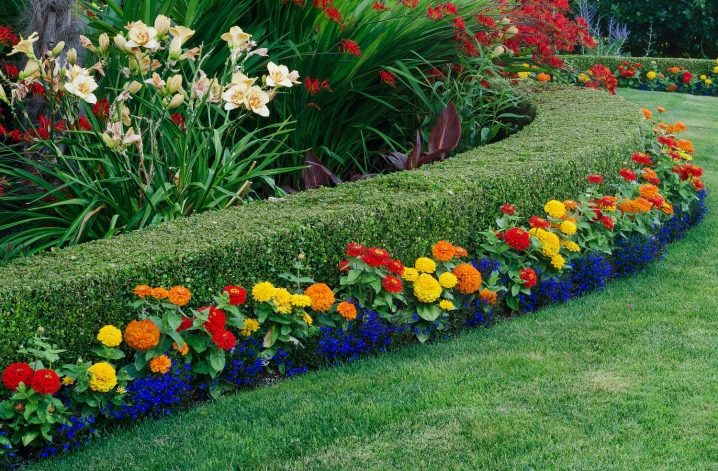
Long rows of expressive multi-colored plants along lawns, bushes, paths look very beautiful.
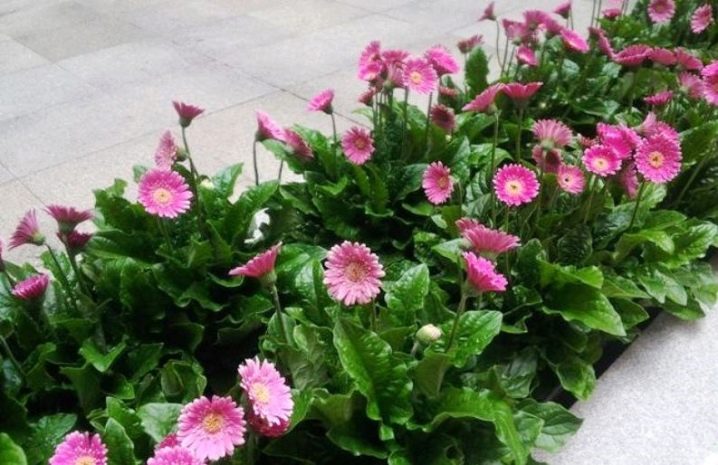
Gerbera is so bright and self-sufficient that any chaotic islands of this plant will look amazing in the garden.
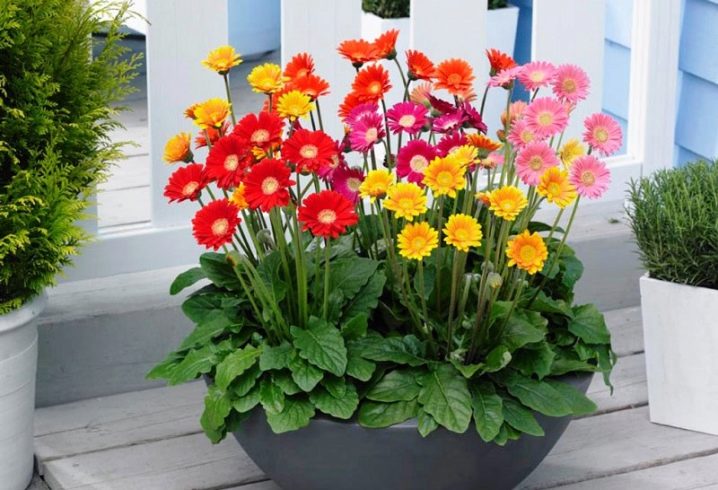
See below for more details.

































































































The comment was sent successfully.